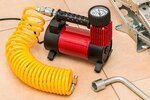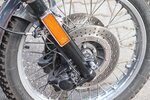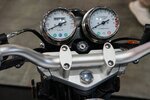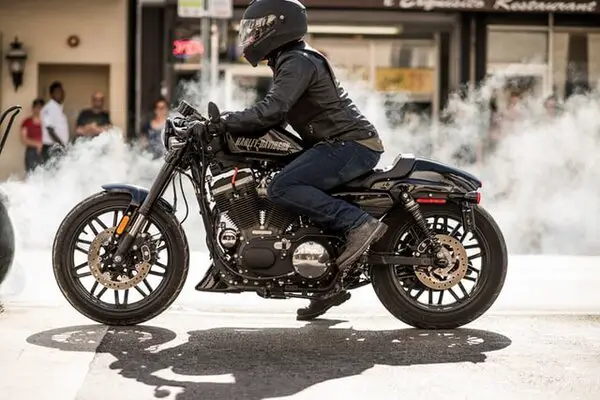Has your motorcycle started to lose its range after years of use? Does every journey feel like a drag? Your motorcycle may be a victim of poor gas mileage. But how to improve motorcycle gas mileage?
Poor gas mileage occurs when your motorcycle is not able to utilize its fuel efficiently. Most of the time, it’s not just one cause but rather a combination of the above causes that drops your motorcycle’s mileage. These might include gas leaks, tight brakes, idling, revving, clutch riding, negligence, and much more.
Lucky for you, there are some simple fixes to improve the mileage of your motorcycle. Perhaps the most common method of increasing mileage is driving at 45-55 km/hr. This is the “sweet spot” at which your engine neither has to combat air drag nor does it run on a lower gear.
Here’s all you need to know about how to improve motorcycle gas mileage:
How to Improve Motorcycle Gas Mileage:
Correct Your Habits:

The first step in improving motorcycle gas mileage is to correct your habits. You may not realize it, but it’s your own habits that waste fuel and reduce gas mileage a lot of the time.
Start by cutting down on idling time. When stopping at a signal, turn off your engine, especially if you know it will take a while for the signal to turn green. When stopping to pick someone up, turn off the engine and don’t start it until the pillion rider mounts themselves.
While you’re at it, stop revving your motorcycle so much. It’s not very practical, leading to a lot of fuel wastage, especially if you’re doing it too often.
Don’t Slack Off on Maintenance:

Want to know how to improve motorcycle gas mileage? This one tip will save you fuel.
Maintenance is one of the most important factors that could improve your motorcycle’s gas mileage. We already established how a leak can affect gas mileage. You can very easily test your tank out for leakages by shining a light through it. Leakages can be fixed by soldering the hole or by switching out for a safer tank.
Aside from that, remember to regularly check the formation of residue and harmful sludge. It can significantly reduce the performance of your engine and lead to lots of fuel wastage.
Also, be sure to check the air filters and remove the stock paper filter if needed. Clogged filters are the number one cause of bad fuel economy, so don’t be afraid to switch them out.
Each component requires a different frequency of maintenance. In general, you should perform maintenance checks every two weeks or so.
Keep the Right Tire Pressure:

Tire pressure plays a vital role in fuel economy. If the pressure is too low, for instance, the resulting friction will drag the engine and cause your motorcycle to burn more gas. This will significantly lower your fuel economy and motorcycle gas mileage.
As a rule of thumb, always keep the tire pressure close to what the manufacturer recommends. If you don’t know what the manufacturer recommends, just find the right pressure where your motorcycle feels balanced.
Loosen the Brakes:

You may not understand the connection, but the brakes also contribute to fuel economy. If the brakes are too tight, they will exert a lot of force on the engine. This will create drag which will force your engine to work overtime.
It’s best to keep your brakes loose, as loose as they originally were. Don’t over-loosen them, or you might run into brake failure. Instead, find the right spot where the brakes don’t feel like they put up too much resistance.
You’ll run into this problem, especially if you’ve messed with the brakes lately. Consider reverting any changes and then compare the fuel economy before you loosened the brakes and after.
Find A Better Path:
Perhaps it’s not about the motorcycle itself. Perhaps the path you take just takes up more fuel. Paths that include traffic jams climbs, and declines, uneven roads, dirt paths, and frequent stops will suck up fuel economy. Additionally, these paths are slower and require lower gears, meaning more power is used every step of the way.
Finding a path that doesn’t include any of the above obstacles, such as a highway or freeway, will improve your fuel economy. If you’re an off-roader, you might want to find a trail that’s not as intense. If you’re a commuter, consider an alternate route that doesn’t have these obstacles. Sometimes, a longer but smoother route will consume less fuel.
Cut Down on Weight:
Cut down on some weight. No, not your own. That’ll require too much dedication. Instead, you can cut down on weight by removing cargo, accessories, or pillions. You can also remove certain parts of the motorcycle to make it lighter, but be very careful when doing so.
Switch to Lighter Materials:
One way to lighten your motorcycle is to switch to a lighter material, particularly carbon fiber or aluminum, if you have steel. You can also swap out your current wheels with lighter ones. If you do want to include accessories, considering buying only the lightweight ones. Also, cut down on the weight in your bag, if any.
What Causes Poor Gas Mileage on a Motorcycle?
You may have noticed your motorcycle getting bad gas mileage. Why is that so? Several factors can contribute to this. Here are some of the most common reasons for bad gas mileage:
Gas Leak:
Something as simple as a gas leak can significantly lower your gas mileage. Gas leaks aren’t uncommon, especially with older tanks. Plus, they can be potentially fatal.
Tight Brakes:
It may not have come across you, but tight brakes can be massive culprits. If you’ve recently adjusted or modified your brakes, consider rechecking them.
Tight brakes exert too much force on the engine. This means the engine has to consume more fuel to accommodate the braking force. Luckily, you can tell if the brakes are too tight by simply braking during your ride and seeing if there’s a lot of resistance or not.
Continuous High Revs:
Motorcyclists love to rev their motorcycles up. But too many or too powerful revs could potentially lower the gas mileage. They consume gas without providing any turning force. You could be wasting a lot of gas by constantly revving up your motorcycle.
What Is Most Fuel-Efficient Speed?

Speed is just one contributing factor that will help enhance fuel economy. Nevertheless, what’s the right speed to get the most out of your fuel? The correct speed is 45-55 km/hr for most motorcycles. Be sure to ride in top gear to avoid shifting to a lower gear. This speed is ideal since it doesn’t overburden your engine and keeps fuel economy at a maximum.
In Which Gear Motorcycle Consumes More Fuel?
Maintaining a constant top speed is just the beginning when learning how to improve motorcycle gas mileage. In which gear should you keep your motorcycle to ensure the best fuel economy?
It may seem counterintuitive, but higher gears have a better fuel economy. This is because, in the lower gears, you need to produce more torque to get the motorcycle started. On the other hand, higher gears can work on the toque already produced by the lower gears and maintain that.
FAQ
Does using a clutch consume more fuel in a motorcycle?
Yes. Using the clutch too often will result in more fuel consumption on both motorcycles and cars. Only use the clutch for changing bears or when braking. Avoid unnecessary use of the clutch, such as for clutch riding or unnecessary gear shifting.
Which fuel is best for a motorcycle?
Depends on what you’re going for and what your motorcycle can handle. Diesel fuel, for instance, isn’t recommended. But if your motorcycle only runs on that, then you have no other option. For performance motorcycles, 90+ octane gas is highly recommended. Additionally, you might like the 87 octane fuel, which is more suited for today’s motorcycles.
Does driving slower save fuel?
Yes and no. Driving at slower speeds will not consume as much fuel as driving faster. But if you’re always driving on a lower gear, you may be outputting more torque than is necessary for the motorcycle. It’s recommended to shift to a higher gear and keep the speed between 45 and 55 km/hr.
This is the purported “sweet spot” for motorcycles who want to know how to improve monocycle gas mileage. Go higher than this, and your engine has to actively work against air drag and friction. Go lower, and you shift to a lower gear.
When should I fill my motorcycle with petrol?
Many sources suggest that early morning is the best time to refuel. This is because the petrol will be the coldest during this time, and hence will be denser. Since petrol is sold by volume, you will get a decent “discount” this way.
Is it better to keep your gas tank full?
It’s better to keep your gas tank full. When it’s not full, all that extra space is covered by air, which contains water vapors. These vapors will condense on the sides of the tank, leading to rusting and loss of fuel efficiency.
What is a good gas mileage for a motorcycle?
A good measure of the gas mileage for motorcycles is between 35 and 40 miles per gallon (mpg).
Conclusion
Getting the most out of your motorcycle’s fuel is a tricky job. It requires extensive knowledge, time, and skills to fully utilize all of your fuel. And what makes it even worse is that most people aren’t aware of their fuel being wasted.
Luckily, you now know all about how to improve motorcycle gas mileage. In short, bad mileage is caused by several factors, ranging from bad habits to tight brakes and even driving at slow speeds.
If you want to maximize your power output, consider adopting some habits that will waste less of your fuel. Don’t leave your motorcycle idling. Don’t clutch-ride. And do regular maintenance checkups.

